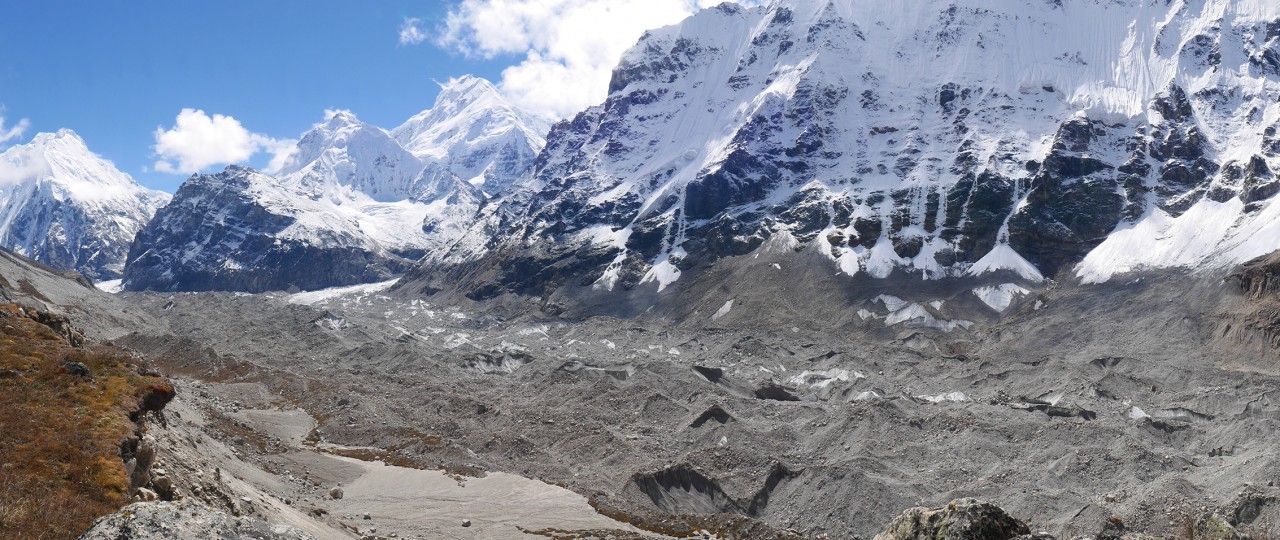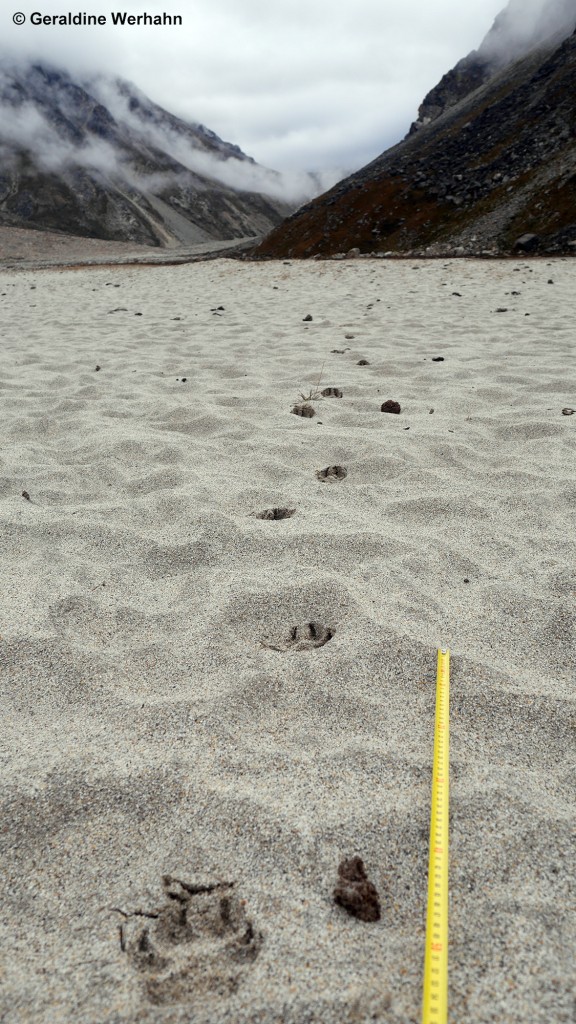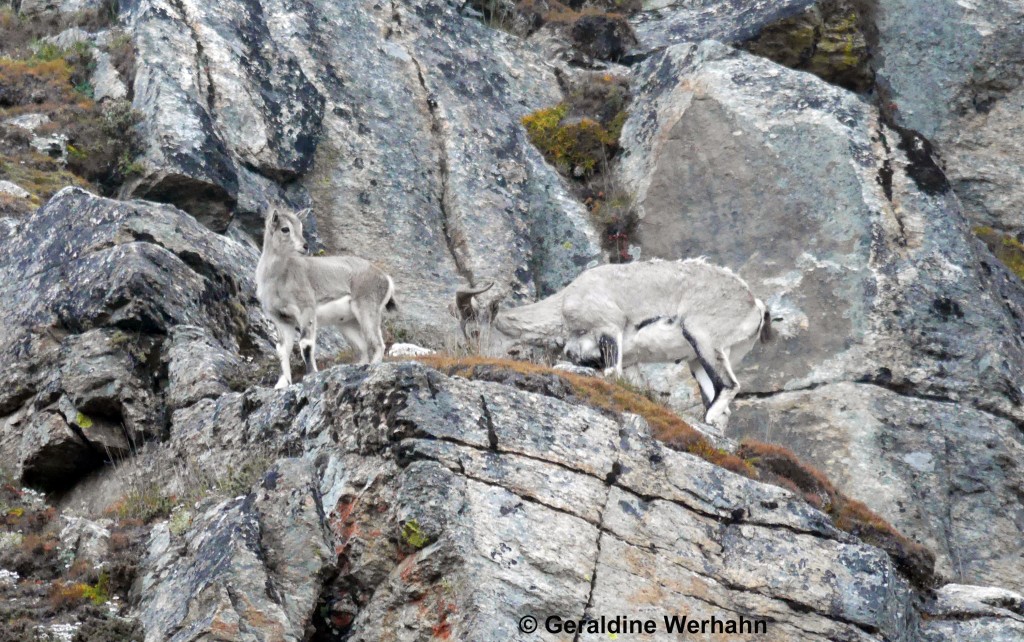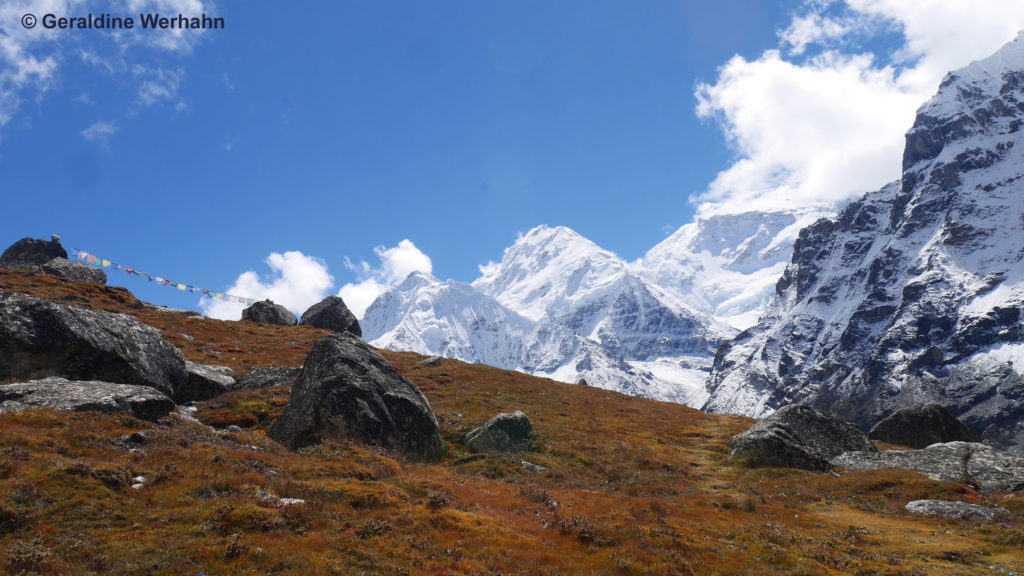Wolf Research Expedition to Kanchenjunga Conservation Area eastern Nepal 2016
To learn about the evolution and ecology of wolves from east to west of Nepal, we searched a third study site for wolves, Kangchenjunga Conservation Area (KCA) in eastern Nepal. We had previously known that this area contains a recovery population of wolves with few individuals only. Consequently the search to pinpoint the wolves took good efforts adorned with lots of rain and leeches due to a late monsoon this year. But we did find the wolves. The conservation area comprises 2035 km2 and contains one wolf pack to date with 4-5 individuals of which 2-3 are pups of this year. Wolves are back to KCA only since four years after having been exterminated from the region for the last 25 years. Wolf individuals seem to migrate between KCA and the Tibetan Autonomous Region of China across the border.
The need for including wolves in conservation schemes
If allowed through conservation measures, the wolf population in KCA can increase to multiple packs in the future. Crucial to this is the inclusion of wolves in conservation efforts such as livestock depredation insurance schemes and awareness programs by the conservation area authorities. Protection in Kanchenjunga is community based and our social surveys suggest that this is a very effective conservation scheme on the ground, with lots of passionate locals involved to monitor and guard wildlife.
Unfortunately the wolves in KCA do cause livestock depredation problems. Local people state that their tolerance and acceptance for the recolonising wolves will be determined by the support to live with wolves by the conservation area authorities. Currently livestock killed by a snow leopard gets compensated through an insurance scheme, which has been very effective for snow leopard conservation. It is time to include the wolves along with snow leopards into these schemes.
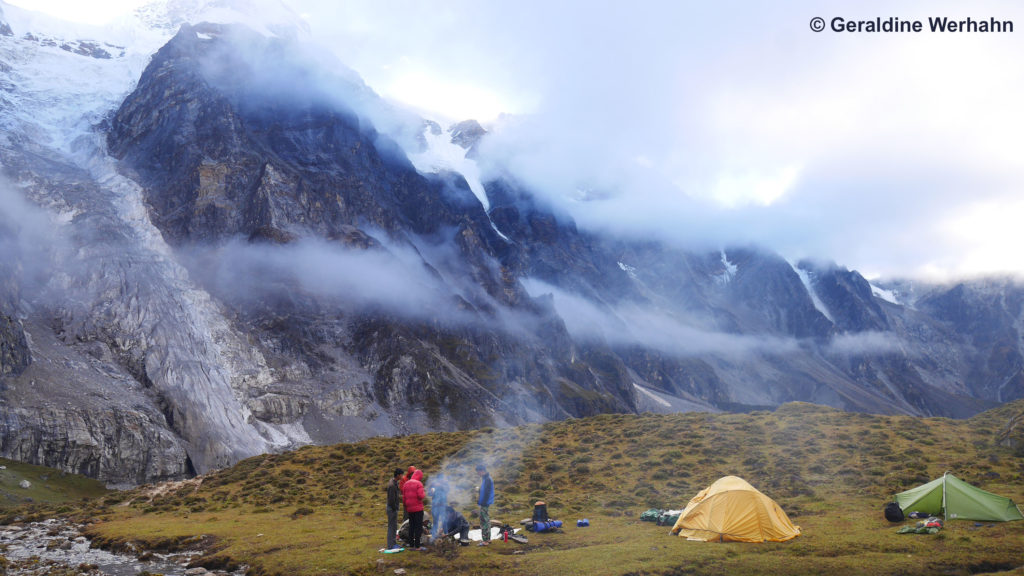
Camp life. Warming up in the early morning at 4800m asl. The success of the expeditions relies on a motivated and resilient team.
